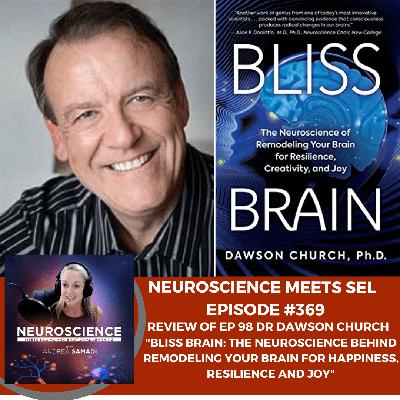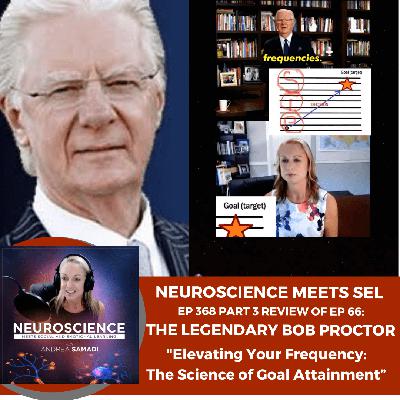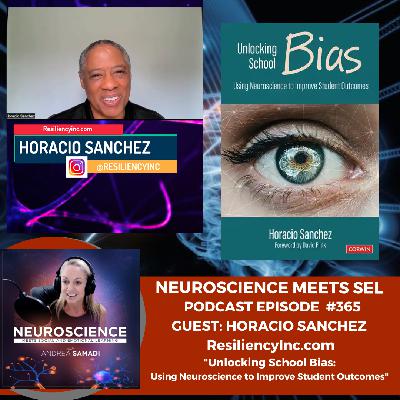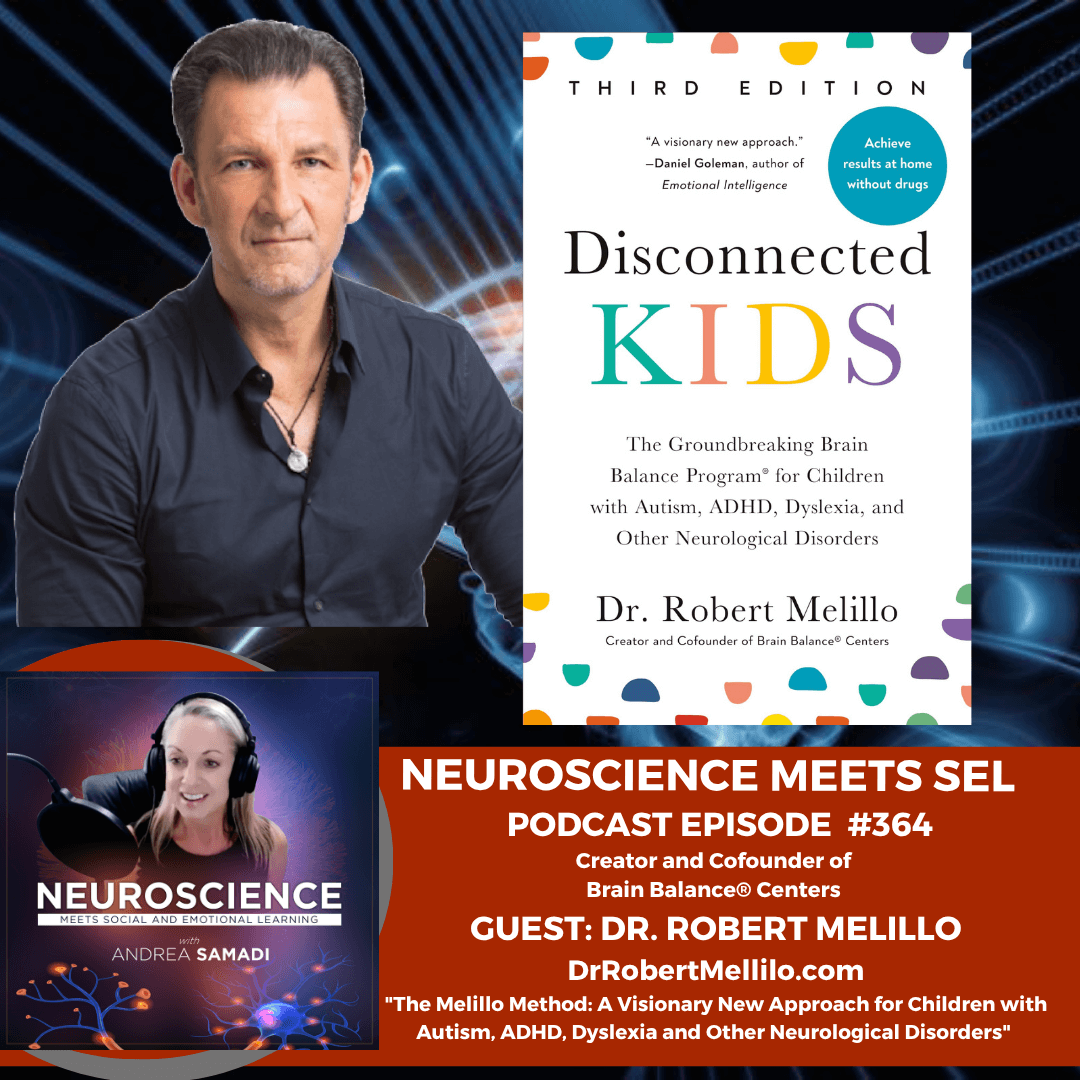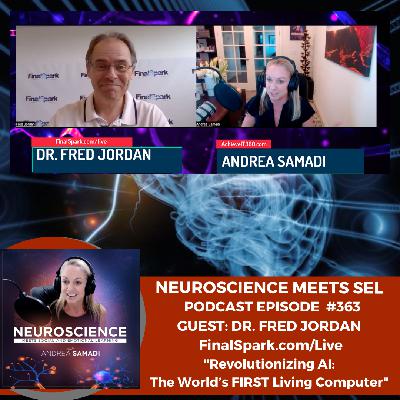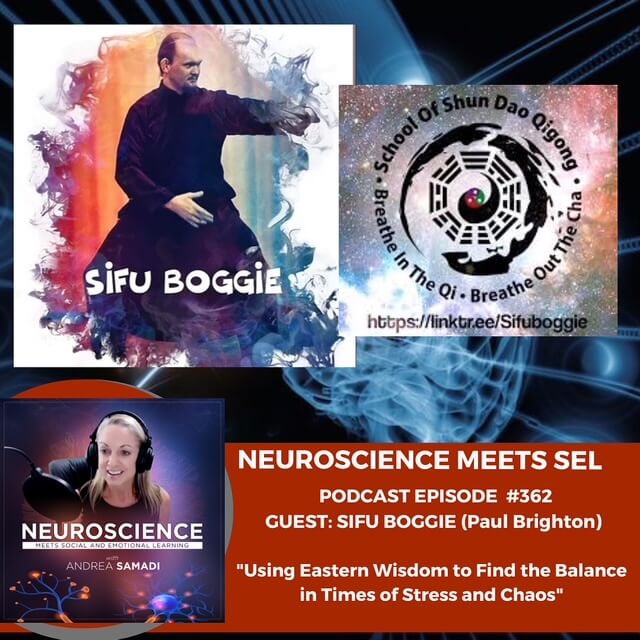Half a Million and Just Getting Started: Lessons from 7 Years of Neuroscience Meets SEL
Description
Andrea Samadi reflects on seven years hosting the Neuroscience Meets SEL podcast and celebrates reaching 500,000 downloads. She shares seven strategies—clarifying mission and vision, defining the audience, setting measurable goals, creating systems, staying mission-driven, building partnerships, and building momentum—and eight personal lessons learned, including the power of practice, research, adaptation, and praxis.
This episode offers practical, science-backed guidance for anyone looking to apply neuroscience to improve productivity, well-being, and long-term results.
On today's episode #377, we cover a break from our interviews, with a celebration episode!
✔ 7 Strategies that took our podcast from 0-500,000 downloads
(including clarifying our mission, vision, defining our audience, setting measurable goals, creating systems, staying mission-driven, and building partnerships).
✔ 8 Personal Lessons learned over the past 7 years
(including the power of spaced repetition, research, adaptation and praxis).
Welcome back to SEASON 14 of The Neuroscience Meets Social and Emotional Learning Podcast, where we connect the science-based evidence behind social and emotional learning and emotional intelligence training for improved well-being, achievement, productivity and results—using what I saw as the missing link (since we weren’t taught this when we were growing up in school), the application of practical neuroscience.
I’m Andrea Samadi, and seven years ago, launched this podcast with a question I had never truly asked myself before: (and that is) If productivity and results matter to us—and they do now more than ever—how exactly are we using our brain to make them happen?
Most of us were never taught how to apply neuroscience to improve productivity, results, or well-being. About a decade ago, I became fascinated by the mind-brain-results connection—and how science can be applied to our everyday lives.
That’s why I’ve made it my mission to bring you the world’s top experts—so together, we can explore the intersection of science and social-emotional learning. We’ll break down complex ideas and turn them into practical strategies we can use every day for predictable, science-backed results.
For today’s EP #377 we will take a break from our interview reviews, and look back over the past 7 years, and 14 Seasons, as we hit an important milestone in the podcasting world, our 500,000th download. I remember when we hit the 300,000th marker, back in March 2023[i] we reflected back on the lessons learned in our first 4 years of hosting this podcast. I remember looking at the next milestone of half a million, thinking it was such a distance from where we currently were. It just took 3 years to get here, and now we have our eye on the next 500,000 downloads, which from here, looks like a lifetime away.
As we reflect back over the past 7 years, many of our strategies remain the same as when we first began. Some strategies we did have to change. We reviewed some of these concepts on EP 279[ii] back in March 2023. As we review what got us here, I think that these strategies can be applied to anything we are doing, with a long-term vision.
7 STRATEGIES WE USED TO HIT THE 500K DOWNLOAD MILESTONE
1. Know Your Mission (What You’re Doing)
The mission of the Neuroscience Meets Social and Emotional Learning podcast is to bridge the gap between neuroscience research and practical applications in education, business, and personal development.
The podcast shares insights, strategies, and best practices to enhance learning, performance, and well-being by integrating neuroscience (which we like to make simple) and connecting it to social and emotional skills (SEL).
Our goal is to provide valuable information listeners can apply in their work and personal lives to achieve peak performance and overall self-improvement, with a deeper understanding of how our brain works — something many of us were never taught in school.
When the mission is clear, anything outside of this mission — applying neuroscience made simple to our daily lives — wasn’t a match.
This clarity helps maintain focus and ensures that all efforts align with creating tangible, positive outcomes. It’s what keeps us consistent, translating complex scientific insights into actionable practices that lead to meaningful improvements in how we think, learn, and interact.
From the very beginning, each guest spoke on a topic aligned with current neuroscience research. Each season was shaped by a framework connecting the six social and emotional learning competencies with foundational brain concepts — what I called Neuroscience 101, based on what I learned while studying with neuroscience researcher Mark Waldman.[iii]
That’s how our seasons were created.
Make This Actionable:
Do you have a clearly defined Mission of WHAT you do?
2. Know Your Vision with a Clear Why
Your vision is why you do what you do. Once you know what you want to do, ask yourself — do you know why?
This is probably the number one question I get asked when people hear that I host a podcast. They’ll say, “Why? What made you decide to do this? Why did you launch a podcast?”
It’s a long story (I’ll keep it short). When I purchased a website in January 2019, it came with a podcasting theme. The developer told me I could delete it, but I was already interviewing people for my work in schools — I just wasn’t releasing that content publicly.
A few months later, I wanted to present these ideas at a conference, but I was told I’d have to pay to present. That felt wrong — why pay to share the work I’d spent years developing? So, I decided instead to launch the podcast in June 2019.
From the beginning, the podcast was meant to be a give-back — a way for anyone to learn these ideas without paying for access. To this day, it remains ad-free for that reason.
My friend and long-time supporter, Greg Wolcott (Assistant Superintendent from Chicago, Illinois, Episode 7[iv]), reminded me how far the show has reached — now in over 190 countries — compared to the 50–100 people who might have attended that conference I wanted to present at.
I truly believe that what’s meant to happen will happen. As my dad would say in his Scottish accent:
“What’s for you, won’t go by you.”
So, with your vision, ask yourself:
Do you know why you are doing what you do?
I often go back to Part 6[v] of our Think and Grow Rich book study, where I dedicated an episode to my mentor, Bob Proctor. He always reminded us that our mission — whatever we want to achieve — becomes possible only once we first of all believe it’s possible.
He’d say:
“What story do you want to tell? What scenes do you want to shoot? How do you want the movie to end? Be the director of your life.”
Once you can clearly see something on the screen of your mind, (Your Mission) the next step is to bring that vision into reality. (Your Vision). That’s exactly how this podcast began — with a clear mission and vision that led to action.
Make This Actionable:
Do you have a clearly written VISION of why you do what you do?
3. Clarify Your “What” and “Who”
After defining your why and what you envision, identify:
What exactly you’re creating (e.g., “a neuroscience and education podcast”).
Who it’s for — your specific audience or community. I wanted our audience to reach outside of schools, into sports and the modern workplace. I remember a few people telling me to stick to one audience, and I just couldn’t do it. I had a broader vision.
Ask yourself:
Who will benefit most from my message?
What do they struggle with, and how can my work help?
💡 Example: “I want to create a podcast for leaders in our schools, sports environments and modern workplaces, who want to understand brain science so they can teach and lead more effectively.”
I followed author, serial entrepreneur and podcaster Pat Flynn’s Podcast Cheat Sheet[vi] — it gave me everything I needed to know to start. My advice: find someone who’s already done what you want to do and follow their suggestions, exactly as they tell you.
Make This Actionable:
Do you have a step by step action plan of where you want to go, written by someone who has already done what you want to do?
4. Set Measurable Goals
A vision is broad; goals make it actionable. Ask:
What does success look like in 3 months? 6 months? 1 year?
How will I measure progress (episodes published, audience growth, connections/partnerships, consistency)?
💡 Example: “Publish one episode per week for six months.”
That’s how we started. Over time, I increased my frequency — but even now, going into year 7, our main goal remains the same: keep publishing consistently.
Make This Actionable:
Do you have a tool that helps you to measure your goals and stay on track? I have always planned out the episode I’m releasing on a wall calendar, so that I can look at the month, and see if it’s possible to release one episode/week. As each week passes, I can check off the episode published, and stay on track.
5. Create a Simple Plan and System
Pat Flynn’s roadmap taught me to break the vision into steps:
Plan – Map out your first few episodes or actions (which is naming your podcast).
Prepare – Set up the tools, workflow, and environment (with suggestions of recording devices).
Produce – How to start creating with scripts, and rec










